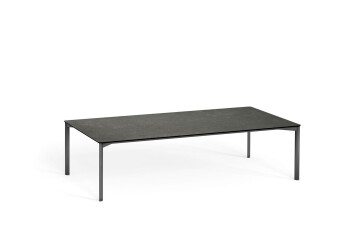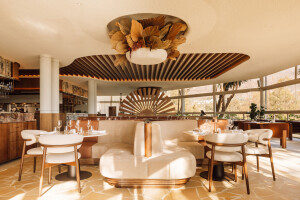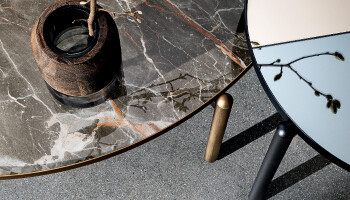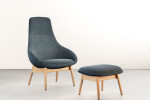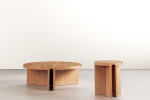"La Exportadora del Mimbre” was founded on 20 November 1960. As indicated by its name, its goal was to export wicker products. After extended stays in Europe, founder Miguel Laso Tortosa, a lawyer by trade, decides to embark on this business venture for two reasons: the lack of products made from natural materials in the then emerging Europe, and the need for greater industrialization and modernization of the largely agricultural based Moixent (Valencia). The raw material for his products was brought in from the nearby region of Cuenca to be processed in Moixent and turned into baskets, folding screens, cradles and trays. These products were strictly artisanal, a characteristic which was highly valued in the rest of Europe.
In 1964, Miguel Laso Llopis, son of the founder, leaves his post as telecommunications engineer in Germany to join “La Exportadora”. According to Miguel Laso “The market was difficult then, owing to increased competition created by low entry barriers and growing supply”. Just four years after its founding, the company undergoes its first reconversion. Miguel Laso reorganizes the production plant and expands the product range.
To the artisanal wicker basket and accessories manufacturing activities he adds the production of armchairs and lounge chairs, never losing sight of the company’s original commitment to quality and comfort standards which were demanded by the new markets.
1970-80 The consolidation
1970. The end of the 1960s and the beginning of the 1970s mark the beginning of a golden period for tourism in Spain, mainly by German, French and Swedish nationals. These visitors prized products made from natural materials and were particularly drawn to outdoor living. During this period, “La Exportadora” adds products made from cane. During this period, the beaches of the Mediterranean coast are inundated with cane lounge and armchairs. With the weekly demand for cane furniture numbering in the hundreds, Expormim experiences excellent growth during this period. But with the arrival of the 1977 recession, the company is once again compelled to reinvent itself. It begins to produce goods ranging from shoe heels to furniture made of metal and plastic for the outdoors. But its premise remained the same: to meet the highest standards in quality and comfort in order to meet market demands.
1980. During this decade there is a shortage of both cane and wicker in Spain. It becomes necessary for the company to look to Indonesia, where the largest and finest rattan plantations were found. Expormim begins importing raw materials for its products. The catalogue expands to offer tables, sideboards, beds and all the products needed to cover the furnishing needs of the thousands of second residences that were being built on the Spanish coasts.
1980-90 The expansion
In 1984, Indonesia bans the export of raw materials. The company is once again forced to re-think its business activities. Miguel Laso Llopis signs a Joint Venture with an Indonesian supplier, producing semi-finished products which are sent to the Moixent factory where they are assembled and finished. Over time and thanks to increased investment, the company achieves the level of quality demanded by its original standards; an effort made possible due to high product turnover. During this period, another company is founded in Indonesia in order to reinforce production and cover market demand. Business was booming; the products sell well and demand increases thanks to other emerging markets such as the French colonies in Caribbean, Africa and Polynesia. New production plants are built in Spain, in keeping with the market demands of the times and the company becomes EXPORMIM, taking on a shorter, simpler name more suited to the company’s export activities but which still retains the essence of the company.
1990. The 1990s see the consolidation of the achievements attained on the international scene and a growing Spanish market. During the mid-1990s, rattan is no longer accepted by some markets. Once again, Expormim must seek out new solutions adapted to the demands of changing tastes. A new collection of furniture made from beech wood is created. A close imitation of cane, this line of products becomes quite popular during this period. Expormim now provides furniture for cafés and hotels around the world. More than 50 countries place their trust in our products, with satisfied customers in 5 continents.
2000-2013 Now, 50 years later
2000. With the advent of the euro, the virtual disappearance of the rattan furniture market and the rise of imports from Asian countries, Expormim seeks re-invention once again. The company, now run by the third generation of the Laso family, must address the changing market and seek out a new business model. Changes are seen in consumer habits, and the company is faced with customers who place a higher value on style rather than on quality or durability. Price becomes more of a concern and quali
Expormim Product
Other Mobili Products
Member Promotion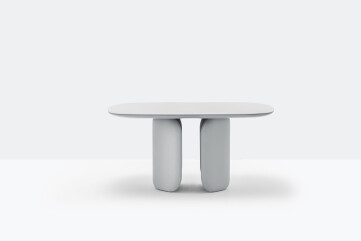
Elinor ELN150X150 PEDRALI
La collezione di tavoli Elinor, caratterizzata da forme morbide e sinuose, è raffinata e contemporanea. Tavolo con base costituita da due eleme...
I Nostri Prodotti sono Utilizzati in Progetti da
Fran Silvestre Architects
Ricardo Bofill Taller de Arquitectura
ÁBATON
Sordo Madaleno
DesignAgency
Romero Vallejo
MESURA
b720 Fermín Vázquez Arquitectos
Huntsman Architectural Group
Rockwell Group
SANDRA TARRUELLA INTERIORISTAS
EL EQUIPO CREATIVO
Teresa Sapey
Balzar Arquitectos
Bross Italy
Filippo Bombace
Michaelis Boyd Associates
Bloomint Design
Vitale
MARGA ROTGER interiorisme
Astet Studio
LOM architecture and design
rizoma architetture
Marga Comas Interior Design
STUDIOGRONDA
Glòria Duran Arquitecte
Progetti con Prodotti da Expormim
Expormim Uffici
Mobili Brands
Is this your brand and would you like to remove content from other manufacturers on your brand page? Contact Archello


